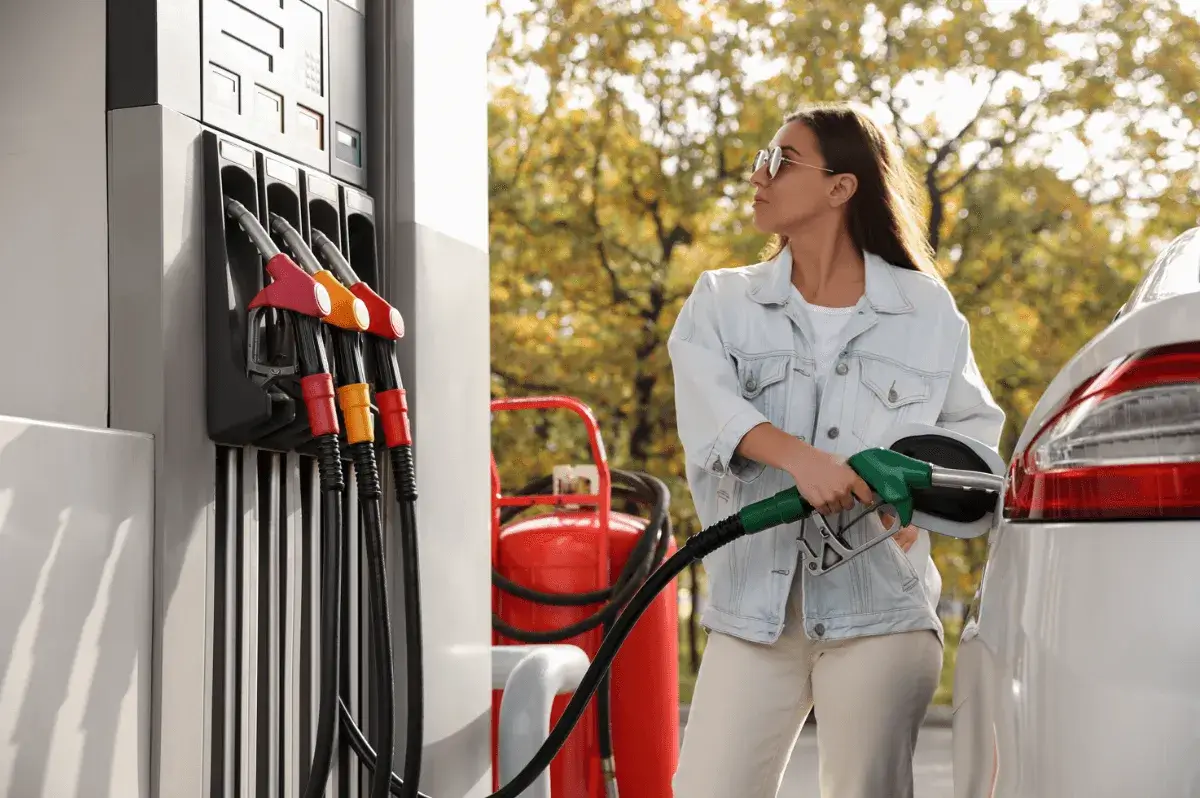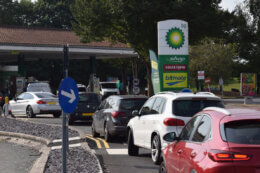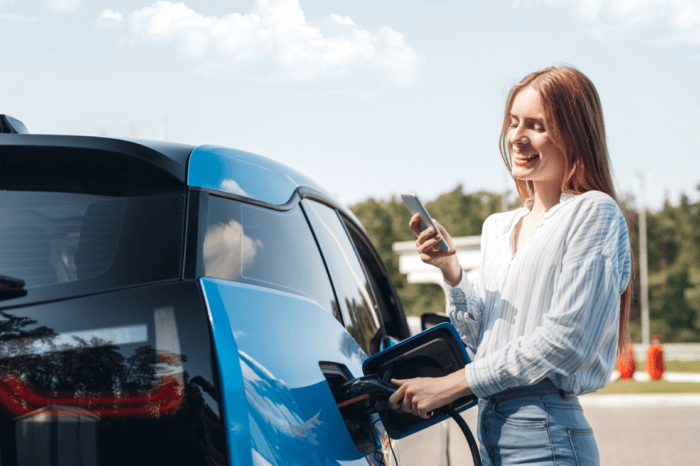
Motorists could save over a thousand dollars a year on car running costs and loan repayments by choosing an EV as their next car purchase, according to new analysis by Compare the Market.
With Australians at a crossroads when buying a new car, the consumer comparison experts’ annual running cost study between three similarly priced medium SUVs found those who choose the Toyota RAV4 Hybrid could save up to almost $1,000 per year in fuel costs compared to the petrol-only Mitsubishi Outlander.
Opting for the full electric BYD Sealion 7 could save Australians up to nearly $1,500 per year when charged at home on the average single tariff electricity plan.
However, while EVs are generally more expensive to comprehensively insure, the average quoted premium for the BYD was on par with the Mitsubishi and even undercut the Toyota.
Average servicing and registration running costs for the electric car were also in line with petrol and hybrid models – but some lenders offered discounted interest rates for certain hybrid and electric vehicles.
ICE vs HEV vs BEV ownership cost comparison
| Mitsubishi Outlander Exceed AWD (ICE) | Toyota RAV4 Hybrid Cruiser 2WD (HEV) | BYD Sealion 7 Premium (BEV) | |
| Purchase price (upfront) | $57,050 drive-away | $55,088 drive-away | $56,780 drive-away |
| Car loan repayment (five-year term) | $13,147 | $12,379 | $12,722 |
| Annual servicing (average of first five visits) | $340.00 | $270.00 | $351.40 |
| Fuel/charging | $2,247.75 | $1,304.25 | $778.08 |
| Comprehensive car insurance (average) | $1,827.10 | $1,978.27 | $1,840.25 |
| Registration and CTP (QLD) | $708.35 | $708.35 | $646.70 |
| Total cost per year | $18,270.40 | $16,640.07 | $16,338.83 |
Source: Compare the Market
Compare the Market’s Economic Director, David Koch, said the growing choice of electrified models meant Australian car buyers can better access cheaper-to-own vehicles amid cost-of-living pressures.
“Owning a car can be expensive, but our research shows that choosing a more fuel-efficient hybrid or full electric model can help to significantly reduce some costs,” Mr Koch said.
“With new brands delivering greater choice and supply of hybrids, I think more motorists will be looking to green vehicles as a cost-effective next-car option.
“Not only do EV owners save on petrol, they may also be eligible to take advantage of green loan offers from banks that can help reduce repayments and save on interest. Regular loan rates and green loan interest rates could vary as much as 2.5%.
“If you’re looking at a novated lease, eligible employees and business owners can take advantage of the government’s fringe benefits tax exemption for select electric cars – which could mean saving hundreds in your back pocket.
“But there’s one big snag all owners do need to look out for, and that’s insurance. We found a difference of thousands of dollars between premiums for all three car models.
“Be sure to always shop around for a better deal – whether it’s for fuel, electricity or car insurance. Don’t drive yourself into higher prices.”
When referencing the research, please attribute: https://www.comparethemarket.com.au/news/car-running-cost-comparison-2025/
Disclaimers
Purchase price
New vehicle drive-away figures are accurate as at 7 April 2025, according to each manufacturer’s website, and are subject to change.
Car loan
Average annual car loan repayments were calculated using the Australian Government’s Moneysmart calculator, according to advertised fixed interest rates from five financial lenders as at 6 May 2025.
Calculations assumed no ongoing fees and repayments do not take into account the reduction of the loan balance over time.
Where an interest rate range was provided, the median or representative rate was used. Some lenders offered discounted rates for hybrid and/or electric vehicles.
The car loan terms were for five years with a $5,000 upfront deposit, paid monthly (where possible), and based on the drive-away price of each vehicle in Queensland as at May 2025.
The three vehicles – petrol internal combustion engine (ICE), hybrid electric vehicle (HEV), and full battery-electric vehicle (BEV) – were selected with a comparable price and equipment level to ensure a fair comparison.
Annual servicing costs
The cost of servicing each model was calculated based on averaging the first five years’ worth of scheduled capped-price services from each car manufacturer, as at May 2025 and are subject to change.
EV charging costs
Electric vehicle charging costs were calculated based on the average home energy plan rate ($0.30 per kWh) on a single-rate tariff in Alderley, Brisbane (4051) as at 11 April 2025.
Running cost calculations were based on the energy consumption claims according to the manufacturer – which will likely vary in real-world driving – and we assumed the vehicle drives 15,000km annually.
Fuel costs
Petrol and hybrid vehicle fuelling costs were calculated based on the average retail cost of unleaded 91 RON petrol ($1.85 per litre) between 8 April 2024 to 7 April 2025 across Australia’s five biggest capital cities.
Running cost calculations were based on the fuel consumption claims according to each manufacturer – which will likely vary in real-world driving – and we assumed each vehicle drives 15,000km annually.
Comprehensive car insurance
Always read the Product Disclosure Statement (PDS) and Target Market Determination (TMD) to check for the inclusions, exclusions and restrictions before purchasing.
Comprehensive car insurance policies were quoted across 14 different comprehensive products across 10 brands and six underwriters for three comparable new vehicles:
- Internal combustion engine (ICE) vehicle: 2025 Mitsubishi Outlander Exceed AWD
- Hybrid electric vehicle (HEV): 2025 Toyota RAV4 Hybrid Cruiser 2WD
- Battery-electric vehicle (BEV): 2025 BYD Sealion 7 Premium
Premiums were quoted for participating brands using Compare the Market’s car insurance comparison tool and directly through well-known insurance brand websites on 11 April 2025, with a next-day commencement date.
Quotes were then averaged for each model. Not all insurance policies were available for all vehicles.
The annual comprehensive car insurance policies were based on a targeted $900 excess for a 34-year-old male living in Alderley, Brisbane (4051) with market value coverage. Where an insurer did not offer a $900 excess option, the closest amount within $100 was selected. Where an insurer did not offer the market value option, the default agreed value amount was used.
We assumed the owner drives up to 15,000km per year (for private use and/or commuting to work only) with a clean driving history, parks the vehicle in a garage, does not own a home, does not own another vehicle, and is employed full-time. All three vehicles had a white exterior colour, no pre-existing damage, and no options or modifications.
Registration and Compulsory Third-Party Insurance
The cost of annual registration and compulsory third-party insurance (CTP) in Queensland for a private use vehicle was sourced from the Queensland Department of Transport and Main Roads during the 2024-25 financial year. A cheaper fee applies for full electric vehicles and models with three cylinders or fewer.
Prices were accurate for the 2024-25 financial year and are subject to change.
-END-
For more information, please contact:
Henry Man | [email protected] | +61 474 368 908
About comparethemarket.com.au
Compare the Market is a comparison service that takes the hard work out of shopping around. We make it Simples for Australians to quickly and easily compare and buy insurance, energy, and home loans products from a range of providers. Our easy-to-use comparison tool helps you look for a range of products that may suit your needs and benefit your back pocket.








